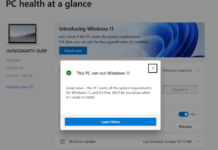Fish is one of the foods that is very rich in calcium and very good for human health. Compared to expensive salmon, many smart housewives can replace it with other local fish varieties that are much cheaper but readily available and sold in Vietnamese markets.
Calcium-rich, affordable and easy-to-find fish varieties

When it comes to calcium-rich foods, fish is one of the good options to choose from. Based on the Vietnam nutritional food composition table in 2017, along with the calcium content in 100g of fish, we can synthesize the following 10 calcium-rich fish varieties:
– Rice Fish: 200 – 500 mg
– Anchovy: 157 mg
– Indian Mackerel: 109 mg
– Snakehead Fish: 90 mg
– Mudskipper Fish: 85 mg
– Smelt Fish: 80 mg
– Flathead Mullet Fish: 70 mg
– Common Silverbelly Fish: 57 mg
– Tuna Fish: 50 mg
– Rohu Fish: 50 mg
With the above nutritional chart, we can also easily see that whether it is marine fish or freshwater fish, they are all good choices for family meals.
Usually, marine fish will have a slightly higher amount of nutrients such as good fats, minerals, iodine… In addition, the calcium absorption from marine fish is also better. However, we can completely replace marine fish with freshwater fish to create a more diverse and abundant menu.
Besides, many people may wonder why salmon is known as a calcium-rich fish but it does not appear in this ranking.
Which fish is the most nutritious?

Salmon is a famous nutritious food due to its rich content of omega 3 good fats, high-quality protein, and various minerals and vitamins, especially vitamin D, which helps enhance calcium absorption. Salmon is highly nutritious, containing abundant protein, omega-3 fatty acids, and vitamins A, B, D. Salmon with edible bones is a source of calcium and supplements magnesium, potassium, and selenium in abundance.
According to some studies, consuming salmon regularly helps reduce the risk of mental disorders such as depression. Polyunsaturated fatty acids reduce mental disorders and are effective for disorders such as cognitive decline, intellectual impairment, and attention-deficit/hyperactivity disorder (ADHD). It is especially significant for children aged 4-12 with mood and behavioral problems. Mothers who consume at least 450g of salmon per week during pregnancy give birth to children with higher IQ scores and better communication skills than other children.
In 100g of salmon, there are: 127 calories; 20.5g protein; 4.4g fat. However, in 100g of salmon, there is only 13mg of calcium. Not to mention, salmon is quite expensive, and not every Vietnamese family can afford it. Therefore, if we want to supplement calcium from fish, we can replace it with many common and easy-to-find fish varieties, which are cheap, high in nutrition, such as rice fish, anchovy, snakehead fish, mudskipper fish, smelt fish, and tuna fish… However, it is not advisable to eat marine fish regularly every day because all marine fish contain mercury, which can be absorbed when using salmon as food. Eating too much marine fish will make the body unable to excrete the absorbed mercury. As a result, mercury will accumulate and harm our health. According to recommendations, it is advisable not to eat more than 4 meals of marine fish per week to ensure good health.




































